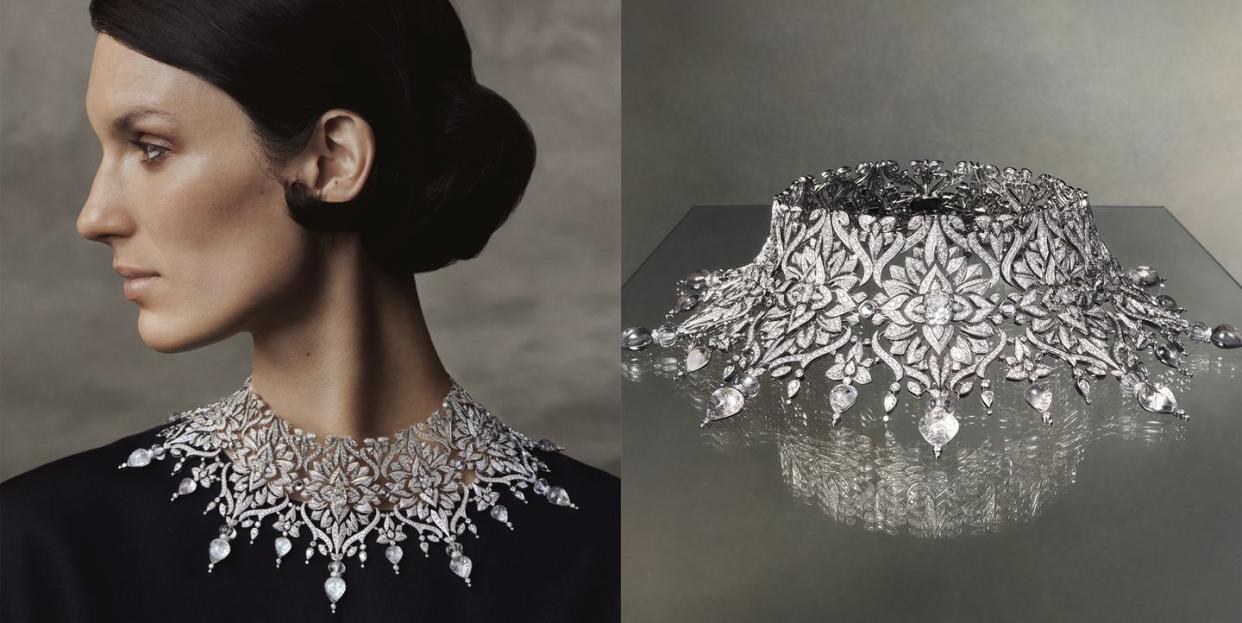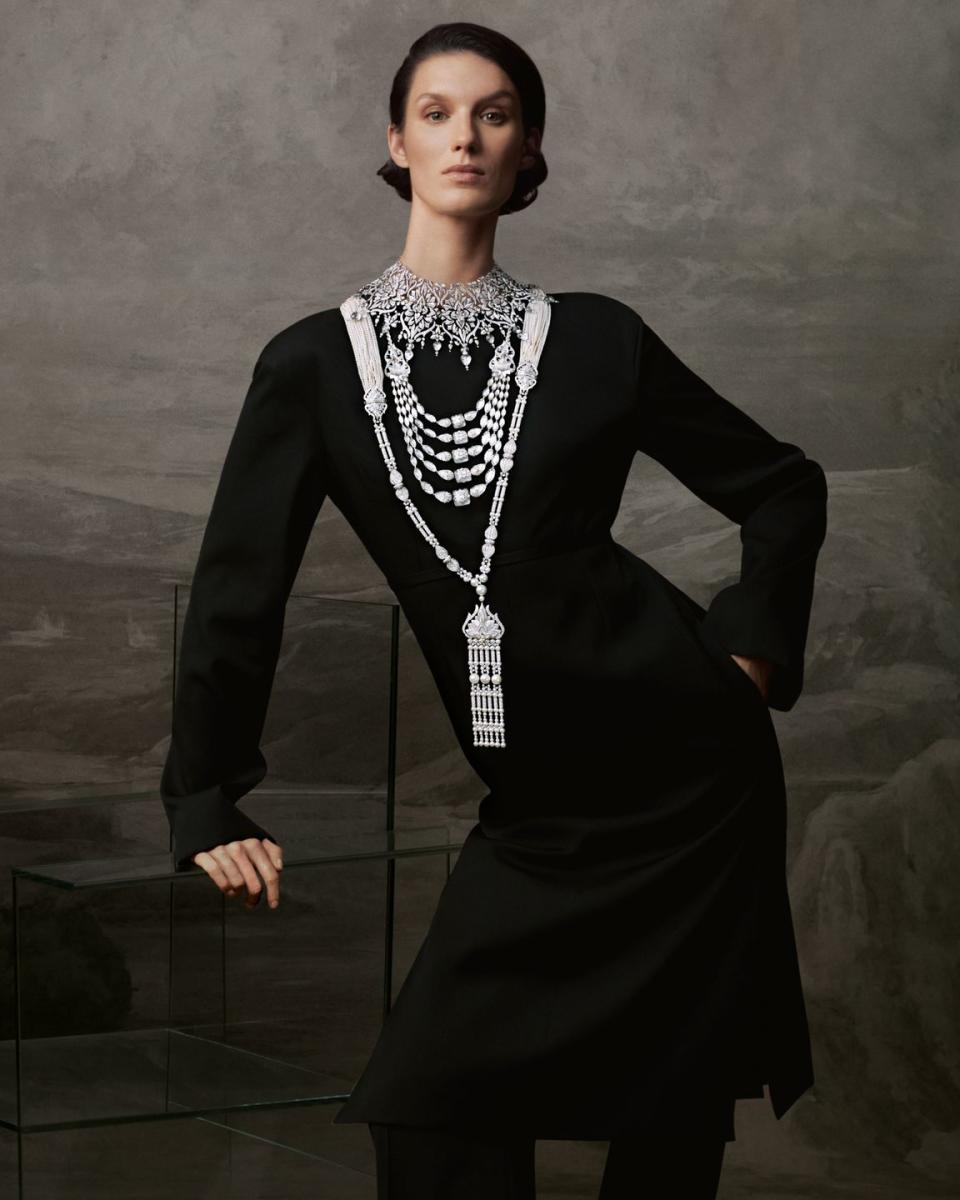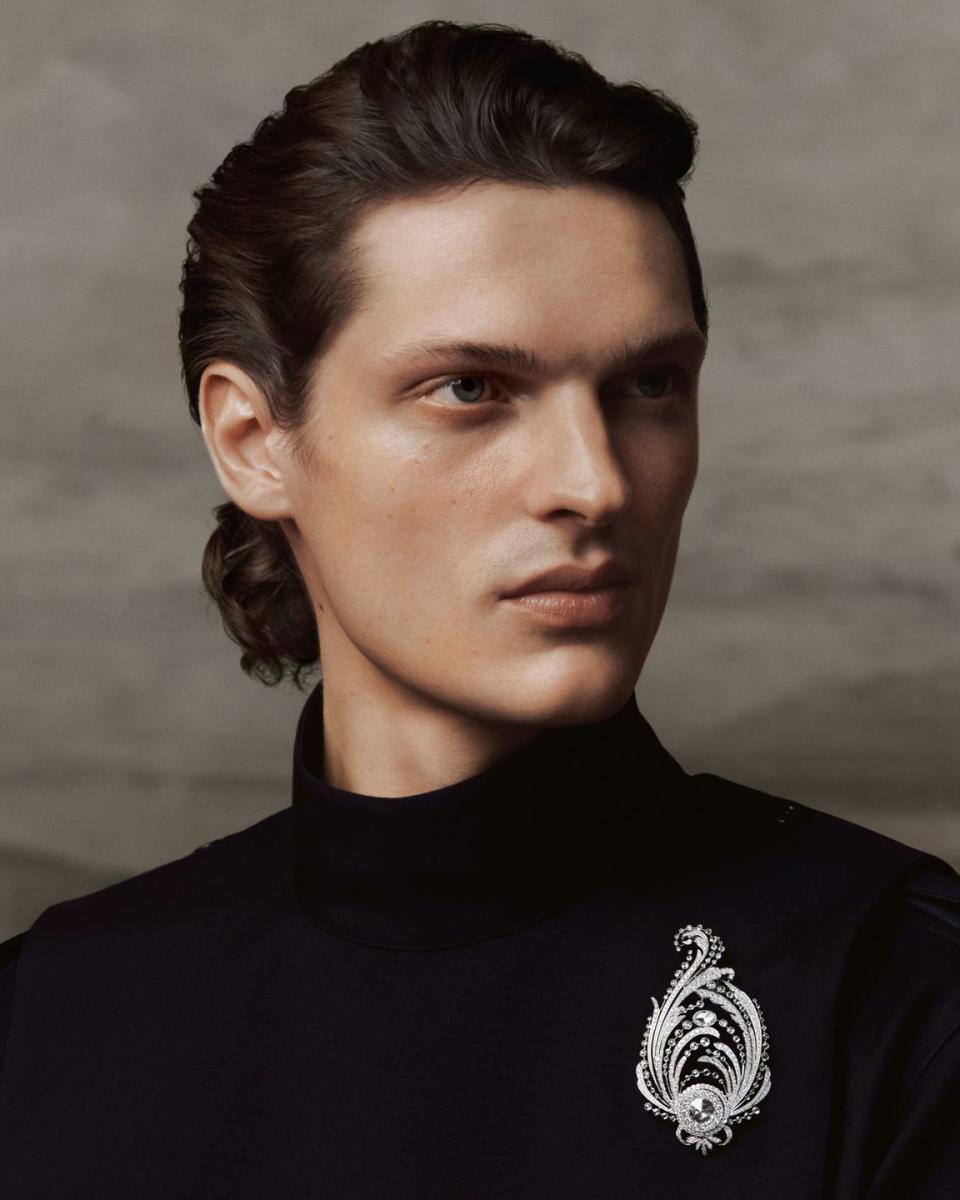New Jewels for the Modern Maharajah

- Oops!Something went wrong.Please try again later.
Boucheron’s biggest single jewelry commission (a jaw-dropping 149 pieces) was surprisingly made for a man. The story reads like a fairytale: In 1928, Maharajah Bhupindar Singh of Patiala arrived at Boucheron’s Place Vendôme boutique followed by an entourage of pink-turbaned Sikh guards carrying trunks full of thousands of diamonds, rubies, emeralds, and pearls. The jeweler transformed the Maharajah’s treasures into magnificent necklaces, armbands, belt buckles, and turban ornaments.
Nearly a century later—and those historic gem-laden pieces were the inspiration for the New Maharajahs, Boucheron’s new high jewelry collection unveiled in Paris today. As the name suggests, it’s for the next generation of jewelry lovers.

Claire Choisne, the house’s creative director, reimagined the famously lavish Maharajah’s jewelry in streamlined, contemporary designs. She spent the past two years working on new ways to portray the Indian spirit without appearing what she calls cliché. “I first saw the drawings of the Maharajah’s original pieces in the archives 10 years ago, and they became my obsession,” she says over a Zoom preview. “I love strength of the pieces, the story and the jewels.”
The New Maharajahs references elements that symbolize ancestral India, such as wedding bracelets, lotus flowers, and turban ornaments shown but in streamlined, stylized pieces. They are also imbued with signature Boucheron elements—like carved rock crystal and transformable elements (one necklace can be worn seven different ways)!

Choisne’s contemporary approach to classic Indian jewels is evident in her choice of materials and metal. For one, she used exclusively white gold and platinum instead of yellow gold. The jewels are made in a monochrome pairing of diamonds, rock crystal, and pearls rather than the usual mix of bright colored gemstones. Traditional gold settings were finely chiseled so that diamonds appear to float on the skin. Even large pieces were designed with open space and transparent stones to create a sense of lightness.
Boucheron shows Indian traditions in new ways: the customary gold wedding churiyan bracelets, given to every bride as a symbol of protection, were created in a stack of 10 white gold monochrome bangles set with diamonds, mother of pearl, and pearls. When not worn, they can be stacked on an artistically carved mother of pearl bobbin.
At first glance, the New Maharini necklace appears like a radiant lace collar. Made with more than 4,500 diamonds, the intricate lotus motif choker features an open-work design that creates an airy lightness. It took Boucheron’s artisans more than 2,500 hours just to create the fine metal setting that curves down the neck.

A symbol of purity in India, the Padma (lotus) rings display a sense of bold volume with chunky carved rock crystal and diamonds. The transparent rock crystal, says Choisne, adds a sense of lightness to larger pieces. Choisne’s affinity for statement ear jewels appears in the Padma Nacre earrings, which feature a diamond-studded lotus flower surrounding the shape of the ear.
The collection’s nod to colorful jewels comes in a standout collar with a central removable design (it can be worn as brooch) with nine cascading Colombian emeralds, diamonds, and carved rock crystal. Another pair of striking emerald and diamond earrings was inspired by a sun-shaped necklace from the 1928 commission. The sun-shape is identical to the Maharajah’s original necklace with diamond rods appointed with 58 floating emerald drops.

The most versatile design might just be the turban ornament known as the sarpech. It’s a stylized version of the aigrettes that Maharajah’s typically wore in the early 20th century and the rendition can be worn in myriad ways—but Choisne especially likes it as a men’s brooch. “It was totally natural for men to wear jewelry during that time, and I don’t know why they stopped,” she said. Over the past few years, Choisne has pioneered gender neutral in high jewelry, a trend which gained traction on the red-carpet last year.
The Maharajah would be pleased to know his pieces are meant to inspire a new generation of jewelry-wearing men.
You Might Also Like

